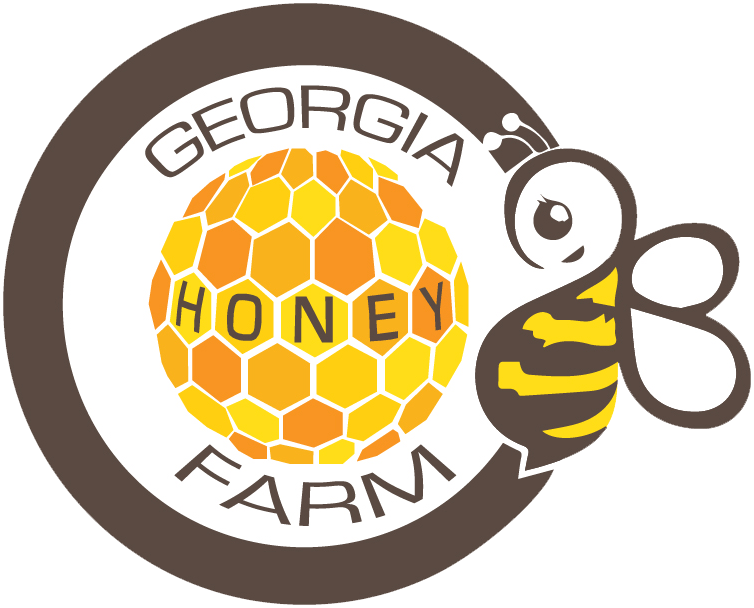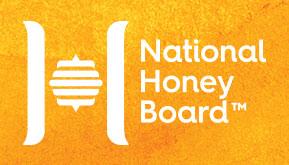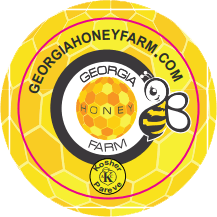FAQ

When honey crystallizes, does it mean it has gone bad?
Granulated honey doesn’t mean it has been spoiled. The crystals you see are just sugar that has hardened probably because of cooler temperatures or the kind of honey you have— some honey just tend to granulate faster than others. This phenomenon has something to do with the honey’s enzyme and sugar content. All you have to do to liquefy the honey is to heat the jar by immersing it in warm water.
What is the difference between pasteurized and micro filtered honey?
The pasteurization and micro-filtering processes are different entirely but what they have in common is that they are the processes applied to commercially produced honey.
The process of pasteurization involves heating the honey to eliminate its benign yeast compound and prevent the onset of fermentation. Beneficial enzymes (i.e. invertase, glucose oxidase, and diastase), flanonoids and polyphnols, as well as other minerals are destroyed in the process of heating. These enzymes mostly aid digestion and provide honey antioxidants and its anti-inflammatory and antimicrobial properties.
Micro or ultra or fine-filtering the honey, on the other hand, is done by straining the honey syrup usually through a layer of diatomaceous earth for pollen and other organic matter. This delays the granulation process of honey and results in a honey with a thinner consistency and clear syrup. Raw and unfiltered honey tends to granulate faster as compared to processed ones.
What is raw and unfiltered honey?
Raw and unfiltered honey is a kind of honey that has not been heated, processed, blended with other honey or substances, or filtered. To be kept in its purest form, the honey shouldn’t be heated in temperatures exceeding 97 degrees Fahrenheit. Raw and unfiltered honey isn’t also micro-filtered to remove organic debris and pollen in it, which are basically what gives honey its healthy benefits and beautiful aroma.
Why do you sell raw and unfiltered honey?
We promote the use of raw and unfiltered honey because it is a healthy and sustainable choice. Raw and unfiltered honey hasn’t been tampered with, and you receive the best nutrition you could possible get with this kind of honey. Also, our honey is produced through the expertise of skilled beekeepers who painstakingly harvest each kind of honey every season so that you’ll be able to enjoy their glorious benefits.
The American honey making industry couldn’t keep up with the demands of the country for domestic honey which is why the U.S. imports most of our honey from New Zealand, Germany, Australia, Canada, Asia and South America. Some of this honey, especially those coming from Asia and South America, have been highly processed and filled with artificial sweeteners even. The quality and purity of this honey entering the country is not only compromised, but its trade is toxic to the waning beekeeping industry.
So buy honey locally. Not only will you be certain that you are getting the highest quality product, but also helping out the regional beekeepers in the process.
Why do honey types differ in flavor and color?
The hints and intensity of flavors in each honey depend on the source flower where the bees have gathered the nectar. Single varietal or monofloral honey is gathered from only one blossom, which gives the honey its characteristic floral flavor (orange blossom, lavender, purple starthistle). Multi-floral honey or wildflower honey, on the other hand, is sourced from different families of flowers, thus offering a unique, complex taste. Generally, dark-colored honey possesses a more robust flavor while honey with a light cast is expected to be mild in flavor.
Honey colors usually range from the purest white to dark amber and largely depend on the consistency and enzyme content of the honey. The honey tint could also be dependent on the type of flower collected as well as its lack or likelihood to granulate.
Darker Honey or White “Foam” means the honey has gone bad?
Honey comes in all colors and flavors. The color, taste and even scent can vary widely depending on the source of the flower nectar, region, soil and climate. Warmer temperatures, storage and age also tend to darken the honey and change the flavor. The white “foam” that appears at the top of honey is simply air. This “foam” is a result of tiny air bubbles in the honey escaping to the top of the bottle.
Is there such a thing as organic honey?
When it comes to honey, is the stuff you are getting actually organic? Simply put – no. There is no such thing as organic honey. Because bees go all around and take nectar from a myriad of locations, it cannot be guaranteed that any honey is 100% organic. In a recent test of commercially available honey, 98% of samples were contaminated with pesticides. The most common was miticides, designed to kill mites that are known to harm crops the country depends on for survival. This study was conducted across the United States and also in one Canadian province.
What is beeswax and where is it from?
Beeswax is created by melting honeycombs in water, collecting it through the use of a strain, and cooling it. A honeycomb is composed of the wax cells created by bees for honey storage. Beeswax is commonly used in a lot of skin care products (body butter and lip balms) and used to make candles and waterproof polish. It can be available in food-grade form that is certified by the USDA Certified Organic Program.
Why is honey recommended for people with allergies?
Honey has anti-inflammatory properties that help people fight allergies and asthma. It contains a good dose of antioxidants as well which basically eliminates toxins that mainly weaken the body. Honey is jam-packed with vitamins and minerals such as vitamin C, B complex, calcium, copper, iron, magnesium, potassium, and zinc which all help in preventing inflammation and swelling of muscles too and keep your vital organs in check.
It is best to eat the type of honey made from the flowers of plants endemic to your area so that you’ll be immune to their pollen when the “allergy” seasons come. Honey functions as an immune system booster by introducing pollen to your body as a sweet treat. It is recommended for people with allergies to take at least two to three spoonfuls of honey everyday months before the onset of your “allergy” season.
Are there bacteria in honey?
No. Honey is rich in enzymes and antioxidants. Any bacteria simply won’t survive in it.
Do you sell graded honey?
No. The honey we sell is not graded because of its particle content. Remember that we only sell raw honey, which are preserved in its purest state and include a high level of enzymes, sugar and particles like pollen. Because of this, it is impossible for our pollen to even pass the U.S. Grade A Fancy requirement, which is usually awarded to highly processed and imported honey.
How should I store raw & natural honey? Does it expire?
For starters, honey should be kept in a glass, stainless steel or food grade plastic jar. Honey stored in containers other than the ones mentioned above may not be essentially good for you. Studies show that honey has a capability of absorbing the particles of copper, tin, iron, aluminum and some types of plastic containers and you don’t know the harm those chemicals can do to you.
We repeatedly state that honey never spoils. However, honey can lose its aroma and flavor if it’s not stored properly. Because of honey’s composition, it absorbs moisture like a sponge. Honey can be stored in room temperature if it is expected to be consumed in a short period of time. Otherwise, keep the honey in a cool, dark place where it won’t be exposed to light. Honey has been called the only food that truly lasts forever, thanks to its magical chemistry and the handiwork of bees. The nectar from flowers mixes with enzymes inside the bees that extract it, which changes the nectar’s composition and breaks it down into simple sugars that are deposited into honeycombs. Fanning action from the bees’ wings and the enzymes from their stomachs create a liquid that is both highly acidic and low in moisture—truly inhospitable digs for bacterial growth.
The processing and sealing of honey also adds to its indefinite shelf life. Despite being low in moisture, honey’s sugars are hygroscopic, which means that they take in moisture from the air. When the heated and strained honey is sealed properly, moisture cannot be absorbed, and the honey stays the same forever. The oldest jar of the sweet stuff ever found is believed to be 5500 years old.









